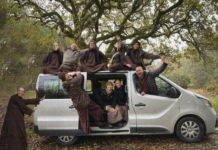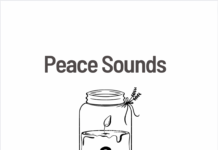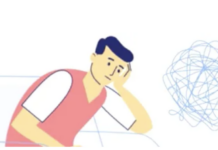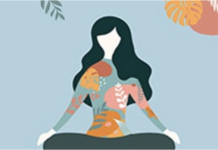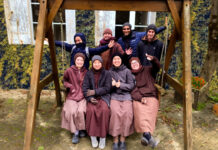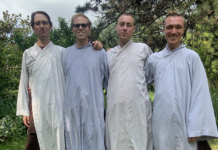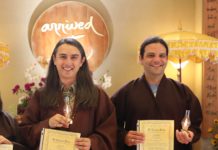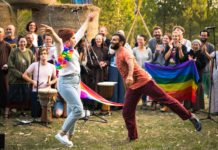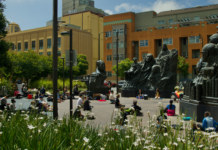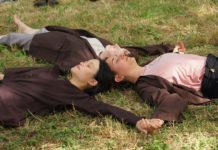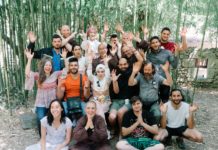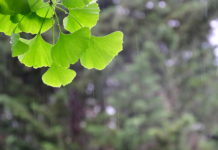A Dharma talk by Kaira Jewel at ABC Home, New York City, in September 2016
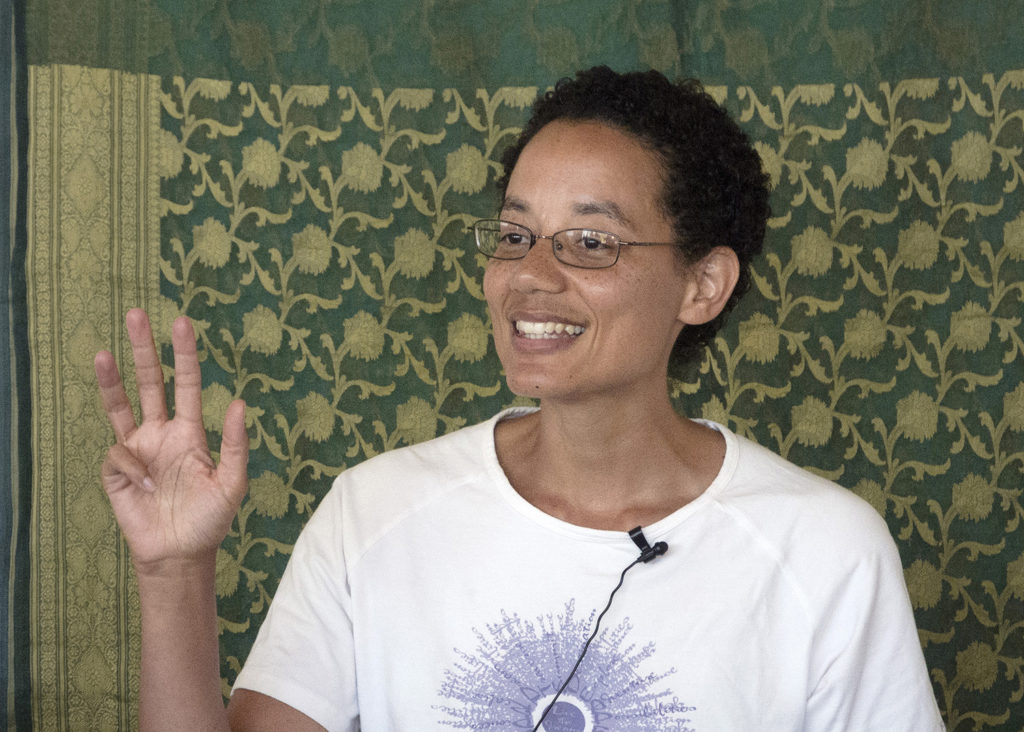 Dear Thay, dear friends, dear Sangha,
Dear Thay, dear friends, dear Sangha,
On the way to ABC Home from where I got off the bus this morning, I noticed the streets felt different from what I had experienced on my previous trips to New York. Barriers were up, and there weren’t many cars. While I knew it was Sunday morning and this would explain the absence of cars, the energy felt very soft and tender.
I stopped to rearrange my backpack, and I asked someone why all the barriers were up. He said there had been two bombings last night. I was so grateful that I was on my way to a day of practice after hearing this news. What we are gathering here to do together is exactly what is needed all the time, but particularly when we are all experiencing the effects of that kind of violence and harm.
When we practiced walking meditation earlier today, I felt we were creating a force field together. It was a kind of food that I needed, and it was nourishing me. It was like drinking up a sense of peace through our peaceful steps on the earth, stillness and acceptance for each other, and holding a space for each other.
We talk about the Sangha, or the spiritual community of practice, as a place of refuge like being on a boat where we can come and be safe, where we can have the space and time to come back to ourselves, and take care of ourselves. We make that for each other; with each mindful breath and each mindful step, we are building a container. We are building a force field for ourselves and for each other that is real. That force field—those seeds of presence, of being really available to ourselves to each other—does not end when we leave here. So that energy we create here together affects this whole city, this whole planet, this whole universe.
With each mindful breath and each mindful step, we are building a force field for ourselves and for each other that is real.
We just had a writing exercise to reflect on what love in action looks like. What comes up for me is that this right here is what love in action looks like to me—showing up and settling in because it is only when we are settled in ourselves that we can really offer something valuable and appropriate to injustice and violence.
In this day of exploring where spirit and action meet, and what love in action looks like in our own lives and in our communities, it is an invitation to begin with ourselves and stop to take good care of ourselves. I know, for myself, I need help to do that. It is hard to do that completely on my own, and I can come to a deeper place of rest in myself when I am with others who are doing this as well.
Some questions I want to offer you are the questions that I am pondering. For those of us who self-identify as activists and for all of us in whatever way we find ourselves engaging with suffering in our surroundings and in our world:
- How can we sustain a culture of self-reflection in our activism and in our work for change?
- How can we organize around a cause while still remaining open to the constantly changing nature of the issue?
- How can we nurture ourselves so we can avoid burnout?
- How do we avoid reinforcing the very systems of oppression we are working to change?
- How do we remain true to our deepest aspirations and intentions?
Mindfulness can be successfully applied to our activism and our work for social change in order to help us cultivate a way of seeing that is the change we wish to create.
So part of mindfulness, part of holding ourselves with care in the work we do, in the engagement that we choose, is to be aware of how much we can hold. I feel like we are in a society where a large number of us are on the brink of being overwhelmed—if not completely overwhelmed. I was joking with a friend the other day that email for me equals overwhelm. Often when I check email, I think, “Oh my god, I can’t keep up with this pace.” That’s in the interpersonal realm, and that’s just one level. And then there is everything that is happening in our world, which feels like it is spinning faster and faster out of control.
There is a Zen story:
Someone approached a monk and asked, “What is this path all about? Just tell me in one sentence: what is this path about? Give me the sound bite version.”
And the monk said, “This path is about an appropriate response.”
How do we respond appropriately to the situations that come into our lives?
In order to respond appropriately with compassion, wisdom, and clarity, we need to be centered and steady. There’s a calligraphy over there which says, “Keep your sitting solid, all troubles will be no more.” How do we keep that solidity in the midst of our troubles so we can really respond appropriately?
In order to respond appropriately to the situations that come into our lives with compassion, wisdom, and clarity, we need to be centered and steady.
For me, a part of that is to take in what we can take in and no more. To find ways to move, and work with what we are taking in so that it does not clog up the pathways in us. That is why this afternoon, I will be offering a session of InterPlay, which is a body-based, body wisdom practice that helps us to move stuff around so that it does not get stuck. It is playful and very powerful.
I had the chance to hear a storyteller named Martin Shaw in England. He was talking about the role of art in social change work, and he referred to the story of Medusa. Perseus went to slay Medusa, the monster with snakes for hair, who was able to turn anyone who looked at her into stone. Perseus was able to slay her by looking at her askance through the reflection of his shield, so he could approach her without being turned into stone.
Martin Shaw was saying that this shield for many of us is art. It is a way of looking at the evil in the world: a way of being present to the real problems that exist without being turned to stone, without being immobilized by the immensity of the issues that we face. I would add this shield is also our spiritual practice—our coming home to ourselves, our taking refuge in community so that we can be in touch with the great suffering around us and we can act to relieve it without getting burned up by its intensity.
I think an important piece of love in action is protecting ourselves, reflecting on what it means to engage and to hold our tender hearts with care at the same time.
An important piece of love in action is protecting ourselves, reflecting on what it means to engage and to hold our tender hearts with care at the same time.
I was leading a retreat in the Spring, and a woman shared that it was so important for her to be at this retreat because she was not listening to news all throughout the day. She told us she was into politics and was following all of the details of the presidential campaign. She would listen to the radio, watch the news on T.V., and read about it on the internet. Many times a day, she was getting this input, and she said it was not beneficial for her. Only when she took a break from and came to nourish herself with another kind of food did she realize how much she needed that break and how unnecessary it was to take in that constant stream of news.
The saying “You are what you eat” is usually applied to edible food, but we need to apply it to all kinds of food we consume: what we listen to, what we watch, and what we read is all food. If I don’t give myself space to take in things that nourish me on a spiritual level, then I feel like I am starving and I can’t offer an appropriate response. I am not resourcing myself at a deeper level with silence, mindfulness, and peace, allowing my mind to have a break from all that needs to be done and everything on my ‘to do’ list.
If I don’t give myself space to take in things that nourish me on a spiritual level, then I feel like I am starving and I can’t offer an appropriate response.
When 9/11 happened, I was traveling with Thay and the Sangha. We were in Southern California, taking a bus to Northern California where he was going to give a talk in Berkeley. We heard about the attacks as we were in the bus driving up the coast, and we were all very upset. Right away we began to think about how we could organize ourselves once we arrived in the Bay Area to create a press release, to go out and get materials from Parallax Press, our publisher, and to help Thay prepare for this talk he was going to give at Berkeley. We wanted to move right away into action, and we were rather anxious.
We went to Thay and said we wanted to do all these things so that we could respond well and quickly to this disaster. So we had come to him that evening once we arrived, and we said that we wanted to go the next day as an advanced group to prepare these things.
And his response was really strong. He said, “No, I don’t want you to do that. What we all need to do right now is to be calm. We need to be still. We need to collect ourselves and nourish ourselves.”
We were surprised. We wanted to get into action, and he was saying, “Stop.”
The next day, he said we were all going to the beach. We were at a monastery near the beach. Everyone went there, and we took this day to play, swim, and be there with each other as brothers and sisters.
We need to put out the flame of anger and of vengeance, and touch the peace, the stillness, and the love that is there so that we can make peace and reach out to others.
It was a big lesson to me about what an appropriate response is. Because we were about to enter a storm and Thay said we needed to take good care of ourselves, that comes first. And the response of the whole community was very grounded. His message to everyone after 9/11 when he spoke at the Riverside Church in New York, was we have to come home to ourselves, and we have to take good care of ourselves. We need to put out the flame of anger and of vengeance, and touch the peace, the stillness, and the love that is there so that we can make peace and reach out to others. That trip to the beach was a very powerful shield with which we could absorb what otherwise would have turned us into stone if we had gone at it directly the way we wanted to.
So I invite us to just sit with the question today, or for however long: what are the shields we can go to in our lives?
What are the ways we can hold what is happening in our own lives, in our communities, and in our world, so that we can respond appropriately and not with overwhelm? Thank you.
Transcribed by Martina McNaboe

